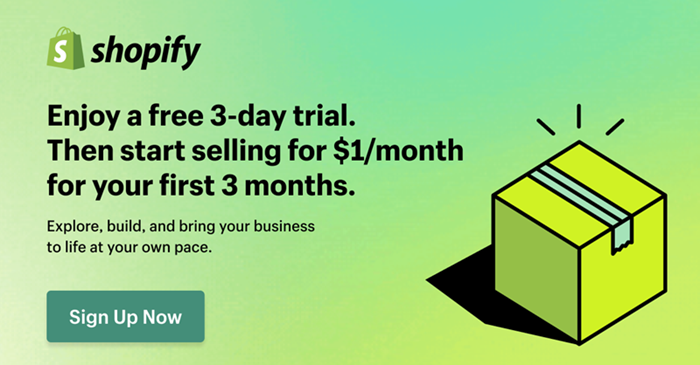My content is reader-supported by awesome people like you. Which means I could earn a commission. Learn more here!
You are ready to launch your online business, but there is just one problem:
you cannot decide between Shopify and Jumpseller
Both promise sleek storefronts, easy management, and the power to grow your brand online.
But what if you choose the wrong one
Imagine investing your time and energy into a platform that limits your growth, costs more than you expected, or cannot scale when your store starts taking off
That is a costly mistake most new entrepreneurs cannot afford
Do not worry, I have tested both platforms hands-on, so you do not have to.
In this side-by-side breakdown, I will show you where each one shines, where it falls short, and which is the better fit based on your goals, budget, and business model
Let us help you pick the platform that will not just launch your store but help it thrive
Key Takeaway Summary: If You’re In A Hurry
| Feature | Shopify | Jumpseller |
|---|---|---|
| Ease of Use | User-friendly, intuitive interface, ideal for beginners | Simple, but might require a bit more time to get used to |
| Pricing | Starts at $29/month | Starts at $19/month |
| Themes & Customization | Wide selection of themes, highly customizable | Limited theme selection, but offers customization options |
| Payment Gateways | Supports 100+ gateways | Supports multiple payment gateways |
| Transaction Fees | 2.9% + 30¢ per transaction (varies by plan) | No transaction fees |
| Support | 24/7 live chat, phone, and email support | Email and live chat support |
| SEO Features | Excellent SEO features, built-in blog | Decent SEO tools, with some flexibility |
| App Integrations | Thousands of apps are available | Limited app marketplace |
| International Support | Supports multiple languages and currencies | Supports multiple languages and currencies |
| Best For | Established businesses, large-scale stores | Small businesses, startups |
Ease of Use For Shopify And Jumpseller
Jumpseller and Shopify have different approaches when it comes to ease of use.
Jumpseller’s dashboard is designed to be intuitive and simple, with drag-and-drop functionality to build your store.
Shopify on the other hand offers a more advanced interface with more customization options available.
When it comes to themes, Shopify has a much larger theme store with over 100 free and paid themes to choose from.
Jumpseller offers 16 professionally designed themes, including options for different industries.
Both platforms allow for the customization of themes, with Shopify providing a bit more flexibility for advanced users.
In terms of integrations and apps, Shopify has a significant advantage.
Shopify offers over 6000 apps to extend store functionality, while Jumpseller has over 80 apps and integrations.
Shopify’s app store makes it easy to connect your store to services for payments, marketing, accounting and more.
Jumpseller has core integrations but fewer options compared to Shopify.
Overall, Shopify offers more advanced capabilities and customization, while Jumpseller focuses on ease of use and simplicity for store owners.
Those wanting maximum control and flexibility would prefer Shopify, while Jumpseller appeals more to beginners looking for an intuitive interface.
Try Jumpseller Free or Try Shopify Free
Shopify Vs Jumpseller For Features
Jumpseller and Shopify both provide extensive eCommerce features to help sellers run their online stores.
Some key differences in features include:
-
Cart and checkout – Shopify offers a seamless, customizable checkout process. Jumpseller also provides a smooth checkout, but some users report it is not as polished as Shopify’s. Shopify also lets you save abandoned carts to encourage shoppers to complete purchases later.
-
Shipping – Both platforms integrate with major carriers like USPS, FedEx, and UPS. Shopify has built-in discounted USPS rates. Jumpseller partners with ShipStation for advanced shipping management (SimilarTech).
-
Taxes – Shopify automatically calculates sales tax for orders. Jumpseller supports tax configuration but rates must be manually entered.
-
Promotions – Shopify provides robust promotional tools like discounts, gift cards, and coupons. Jumpseller also supports discounts and coupons but lacks some advanced promotional features.
-
Inventory – Both platforms offer inventory management tools. Shopify has advanced location-based inventory tracking. Jumpseller’s inventory features cover the basics for most small sellers.
So in summary, Shopify generally offers more advanced and robust eCommerce features, especially for larger sellers.
But Jumpseller still provides the core features needed for an online store.
SEO Features Offered With These 2
When it comes to SEO, both Shopify and Jumpseller offer some solid built-in capabilities along with the ability to optimize further with apps and customizations.
Out of the box, Shopify includes basic SEO features like custom meta titles and descriptions, alt text for images, and Schema markup for rich snippets.
It has a simple URL structure that’s easy to customize for better optimization.
Shopify also offers a blog and automatic sitemaps to boost organic traffic.
Jumpseller has SEO basics covered as well, with title and meta tag editing and alt text options.
It utilizes leaner code and faster load times that can benefit SEO.
However, the URL structure is not as customizable.
Jumpseller also lacks some more advanced features like built-in site search optimization.
Both platforms integrate with Google Analytics for tracking and data.
But Shopify offers more customization for optimizing product and collection pages SEO-wise.
With Shopify, you can edit the handle to improve URLs and control H1, title tags, and meta descriptions for each product page.
Overall, Shopify provides more out-of-the-box SEO capabilities and customization options to optimize product pages and site search.
Jumpseller’s faster load times are a plus but less flexibility for custom URL structures is a drawback.
Shopify takes the edge for built-in SEO features, though both platforms benefit greatly from SEO apps.
Marketing and Sales
Jumpseller and Shopify offer different marketing tools and sales channels for merchants.
For marketing, Shopify provides a native email marketing tool to create campaigns and newsletters.
Jumpseller integrates with third-party email services like Mailchimp, Klaviyo, and Omnisend.
Shopify also has a native loyalty program app, while Jumpseller relies on apps like Smile.io for loyalty and rewards.
Both platforms support affiliate marketing programs.
Shopify powers its own Shopify Affiliate Program, while Jumpseller integrates with Refersion, Impact, or other affiliate software.
In terms of sales channels, Shopify and Jumpseller take slightly different approaches.
Shopify offers a native POS system called Shopify POS for brick-and-mortar sales.
Jumpseller integrates with POS systems like Vend, Square, and others.
For selling on marketplaces, Shopify powers Channel Integrations with Amazon, Walmart, eBay, and more.
Jumpseller connects to marketplaces through third-party apps.
Both platforms support social commerce selling on Facebook and Instagram.
However, Shopify has a more built-in approach through Shopify POS and Channel Integrations vs Jumpseller’s third-party app strategy.
Overall, Shopify offers more native tools for marketing and sales channels.
Jumpseller relies more on third-party integrations.
Merchants should evaluate which set of native vs third-party tools fits their needs.
Mobile Commerce
Jumpseller and Shopify both offer responsive themes and mobile optimization to ensure stores look great on any device.
However, Shopify has a bit of an edge when it comes to mobile apps.
Shopify offers a free mobile app called Shopify POS that allows for offline selling, accepting payments, and syncing data.
There is also a Shopify AR app that enables augmented reality product previews.
Jumpseller currently does not offer any proprietary mobile apps.
Both platforms also make it easy for stores to be indexed and discovered through mobile search.
Overall, Shopify provides more mobile commerce capabilities out of the box, with free mobile apps tailored specifically for eCommerce.
But Jumpseller still enables decent mobile optimization and integrations.
For most basic mobile commerce needs, both platforms will suffice.
Stores wanting proprietary apps and offline selling may prefer Shopify.
Security Features Offered
Both Shopify and Jumpseller take security very seriously and employ measures to protect merchant and customer data.
Shopify uses SSL encryption and provides fraud analysis tools to help merchants identify and prevent fraudulent orders.
Shopify also offers backups and web application firewalls as added layers of protection.
Similarly, Jumpseller uses SSL certificates and has a security system that prevents unauthorized access, monitors for vulnerabilities, and complies with security standards like PCI DSS.
When it comes to security, both platforms offer robust features to help give merchants and customers peace of mind.
Shopify may have a slight edge with additional protections like web application firewalls and backup functionality.
But overall, Jumpseller matches Shopify’s core security offerings.
Customer Support
Shopify offers 24/7 support via email, live chat, and phone.
They also have an extensive help center with articles, videos, and guides.
Shopify reps are known for providing quick and knowledgeable support.
Jumpseller lacks phone support and 24/7 live chat.
They offer email support and a help center.
Overall, Shopify appears to provide superior customer support due to offering more channels of 24/7 support and receiving better reviews for support quality.
Jumpseller’s support options are more limited.
Pricing

Pricing is an important factor when choosing an eCommerce platform.
Jumpseller and Shopify use different pricing models.
Jumpseller has 4 main pricing plans:
- Basic – $11 per month
- Plus – $21 per month
- Pro – $42 per month
- Premium – $84 per month
The Starter plan includes basic features like unlimited products, abandoned cart recovery, and online chat support.
The Professional plan adds features like advanced reporting and shipping discounts.
The Premium plan has everything like advanced marketing tools.
Shopify has a flat monthly fee that varies based on which features you want.
The Basic Shopify plan starts at $29 per month.
The Shopify plan at $79 per month adds features like gift cards and staff accounts.
The Advanced Shopify plan at $299 per month has advanced features like calculated shipping rates.
When calculating total cost, Shopify can end up being more expensive than Jumpseller at higher plan levels.
For example, over one year the total cost would be:
- Jumpseller Premium: $84 per month x 12 months = $1,008/year
- Shopify Advanced: $299 per month x 12 months = $3,588/year
So Shopify Advanced is $2,580 more per year than Jumpseller Premium.
The extra costs come from transaction fees with Shopify, which can add up quickly.
Jumpseller does not charge transaction fees.
In summary, Jumpseller tends to be more affordable, especially at higher plan tiers when factoring in all costs like transaction fees.
But Shopify offers a flat monthly fee, which is predictable.
Try Jumpseller Free or Try Shopify Free
Shopify Vs Jumpseller Conclusion
In summary, Shopify and Jumpseller have some key differences that make each platform better suited for certain use cases:
-
Shopify is easier to use out of the box, with a simpler interface and setup process. It’s a better choice for small businesses just starting out with eCommerce who want something easy and intuitive.
-
Shopify has better SEO capabilities and integrates with more marketing apps. Jumpseller’s focus is more on sales optimization than marketing.
-
Shopify has better support resources, documentation, and a thriving app ecosystem. Jumpseller provides onboarding training and email support.
-
Jumpseller is more affordable at higher sales volumes compared to Shopify’s percentage of sales pricing model.
So in summary, Shopify is ideal for small eCommerce beginners and up, while Jumpseller suits small to medium-sized brands wanting advanced sales features.
Consider your business’ size, industry, goals, and technical needs when choosing between these two capable eCommerce platforms.
Both have their advantages, so evaluate which aligns better with your use case.







Leave a Reply